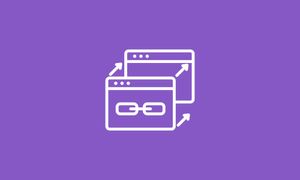Backlinks are the lifeblood of SEO today, just as they were 10 years ago. According to CIO, backlinks are the second most important ranking factor, after content relevance; whereas Moz declares page- and domain-level back-links to be the most influential ranking factors.

However, unlike 10 years ago, today it's the quality of the backlinks that counts and not the volume. In fact, a large number of low-quality backlinks can get your site de-indexed, thanks to Google's Penguin Update rolled out in 2012. More than ever, a sound SEO strategy is vital to success. So, what makes a good backlink? Perhaps more importantly, how can you get more good backlinks and avoid bad ones? Let's explore!
WHAT MAKES A GOOD BACKLINK?
Google and other search engines use many factors to determine the quality of backlinks for the purpose of ranking websites. Though they seldom disclose their exact mix, experts believe most of these factors can be roughly grouped into four broad categories—relevancy, trust, diversity and authority.
Relevancy
Google and other search engines want to provide their users with the most relevant search results. If the quality of the search results they provide declines, so does their audience. So, it's only logical to consider relevance as a measure of link quality. A backlink is more valuable if it comes from a relevant source. For example, if you have a website about home décor, an incoming link from a construction website might be more useful than one coming in from, say, a health and fitness website. This is, of course, an oversimplification, though. Search engines consider a myriad of factors to determine relevance.
For instance, a relevant link is likely to be clicked. Anyone building a home is likely to be interested in interior décor and click that link. On the other hand, someone browsing for outdoor fitness tips may not be in the best frame of mind to click a link to a home décor site. The anchor text (be careful not to over-optimize anchor text links, more on this here), surrounding copy and surrounding links also help search spiders find out if your link is relevant or if it is spam.
Trust
By ‘trust’, we mean how much Google trusts the website from where your links are originating. Some argue that, in all likelihood, search engines use a set of "trusted websites" to determine the trustworthiness of a domain. The examples of trusted websites might include BBC, HubSpot, or Huffington. The closer a particular domain is to a trusted domain, the more trustworthy it is. The nearness is measured in terms of the links that stand between a trusted website and the subject domain. So, theoretically speaking, if site A has a backlink from, say, BBC, and site B has a backlink from site A, the search engine is likely to trust site A more than site B, and so on. It is expected that Google uses a trust scale to determine the value that a link from certain domains might pass through to the link destination.
Of course, the above is an overly simple explanation of how search engines determine the trust factor. In order to be ranked higher, a website must have backlinks from high trust websites.
Diversity
A diverse link profile would consist of links from different domains, and different types of domains. By "different domains" I mean that all or majority of your links should not be from the same domain. Different types of domains means that all or majority of your links should not be from the same type of domains, e.g. web directories. A robust link profile is diverse in both the senses.
Diversity should also cover where on the page the link is (body, footer, sidebar, etc.) as well as the diversity in the anchor text you use. It might also cover the link attribute, whether that be FOLLOW or NOFOLLOW.
When people talk about link building, they're usually thinking about building explicit links from other websites. The fact is that today's search engine spiders are fast and intelligent enough to track even implicit links, reviews, etc. from all across the internet. That's why a reliable citation profile and social media presence should always help. Building links from these and other popular citation, review and social platforms will make your link profile more diverse and set up a good foundation for your link building efforts.

Authority
There are many ways to consider ‘authority’. There seems to be an insistence within the SEO industry on assuming that DA (Moz domain authority) is the default authority metric. Truth be told, DA is simply Moz’s attempt at understanding how Google might calculate authority. Domain Authority is simply a 100-point algorithmic scale which you can measure using Open Site Explorer.
The domain authority of CNN.com, for example, is 97/100. It has more than 152k total links from more than 5000 root domains. Similarly, you can check the DA of any particular domain before targeting it for your link building initiative. Anything above 70 is great, but above 40 isn't bad either. Using the DA metric alone, though, doesn’t tell you the full story of the domain.
Other tools have their own way of trying to determine authority.
- Majestic developed Citation Flow
- Link Research Tools developed LRT Power
- Ahrefs developed Domain Rating
It is important to remember that it can be quite easy to school/manipulate authority metrics by building a lot of links from untrusted websites, so it is also recommended to use trust metrics and try to build a picture in your head about the link profile of the website which you want a link from.
How To Get Quality Backlinks
In Matt Cutts' words, "The objective is not to ‘make your links appear natural’; the objective is that your links are natural." Some SEO experts have interpreted him to mean that you should create great content and people will automatically link to it. However, "write it, and links will come" doesn't always happen.
Great content is the first thing, but not the only thing you need for acquiring backlinks. For that, you'll need to actively target high authority websites with content that they'd love to link to. The problem is, websites with a high DA score either won't always publish your content, and they quite rightly have extremely high-quality standards. Here are a few strategies that might work.
Audit Your Link Profile Using Majestic Seo
Majestic is an excellent tool for researching your current link profile and discovering the areas that you need to work on. You can quickly analyse your domain and your competitors' websites and see if the quality, diversity and relevance of your link profile holds up against your competitors'. This will give you a fair idea about which particular websites you need to target.
Make A List Of Websites
You can start by understanding your audience and make a list of the websites that would appeal to them. The list should contain the authority and trust scores as highlighted above and the perceived difficulty of getting a backlink from a particular domain.
For instance, it's relatively easier to get links from a website that accepts guest posts from just about anyone compared to one that doesn’t. Think about these carefully, though, the posts that are harder to acquire are usually the best links.
Discover Linking Opportunities
Guest blogging isn't your only option for building backlinks. There are numerous tools and techniques available to help you identify link opportunities on the domains you are targeting. I'll briefly cover a couple of important ones here.
THE MOVING MAN TECHNIQUE BY BRIAN DEAN
1. Look for websites/pages in your industry that no longer exist. You can do it simply by doing a Google search with phrases like "page no longer exists" or "service not available".
2. The next step is to use OSE, Majestic or another link crawling tool to find out the domains and pages linking to the page that no longer exists.
3. Shortlist the domains of interest. Create a piece of relevant and compelling content on the subject and offer the site owner or manager a link to your new resource from their old piece of content. Details of this method can be found here.
THE BROKEN LINK REPLACEMENT METHOD
1. This is the reverse of the Moving Man Technique. Instead of looking for pages that no longer exist, here we analyse our target domains and find out the broken links that lead to an outdated or unavailable page.
2. You can use Broken Link Checker or Google's Chrome Broken Link Checker Extension to find links that lead to a 404, 500 or 502 page from a particular domain or webpage. You'll be able to find dozens or even hundreds of broken links on your favourite domains.

3. Shortlist the topics of interest among the links that no longer work. Create high-quality content on those topics, and reach out to the target domains, offering them to link to your content.
Reach Out, Follow Up, And Repeat
As you may have guessed, you've got lots of work to do. Research, analyse, create, reach out, and be consistent, and you'll see your link profile and traffic improve sooner than you would have thought.
Interestingly enough, 46% of eCommerce businesses plan to use SEO to grow in 2017. For them to be a success, they need to follow methods similar to those in this post. But don’t forget that there are so many other attributes that make a good SEO campaign. Start of by auditing your website and ensure your content is up to scratch!
To quote Cutts once again, "Link building is sweat plus creativity."






